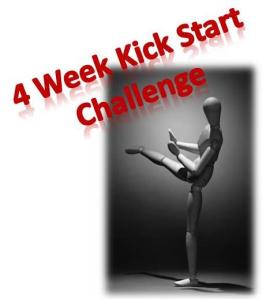This week, I hosted a webinar “Kick Start Your Successful Career” during which I interviewed Career Coach Faye Hollands, from Outshine Consulting. As part of the registration process, I asked participants “What’s your burning career question you’d like answered.”
During the webinar Faye shared not only the 5 big career mistakes people make but also her 5 keys to career success. There was so much information to get through in the hour, that we didn’t have time to answer the burning career questions so I’d thought I’d tackle some of them here instead.
Some of them are REALLY big questions and worthy of a post all of their own so in this post, I’ve just attempted to provide a brief response to kick off some discussion. Thanks to Faye for also contributing her views which I’ve incorporated into the answers.
Q: How do I build a new career whilst not losing current income?
A: Faye makes the point that “In most cases you will experience some drop in income if you are changing careers entirely – what’s more important is to assess the COST to you of not changing career and staying in a job that you don’t like.”
Planning is key here. You need to work out how much money you need to live on – a budget. No matter how much you want to change careers, you need to be realistic about it. If you’ve prepared a budget, then you will know whether or not you can afford to drop income and if so, for how long is it sustainable to do so. You also need to plan your career move. There may be a lot that you can do to prepare for your next career while still in your current job.
If it is viable for you to take a drop in income for a period, then you need to plan how you can redress the shortfall in the shortest time possible. How can you capitalise on your transferrable skills and make sure you have the right mindset and attitude to leapfrog your competitors?
Q: Is the concept of full-time employment now an outmoded idea?
A: Very interesting question. I’d say the answer is no with a strong BUT! According to the latest ABS Labour Force Survey, there are nearly 8 million people in Australia in full-time employment and 3.5 million in part-time employment. According to an ABS study carried out in 2001 (nearly 10 yrs ago!), there has been a growing shift toward part-time employment in the past decades.
The International Labour Organization (ILO) states that “The number and proportion of full-time employees with contracts of indeterminate duration has decreased constantly in developed countries since the mid-1980s. As labour markets have become more flexible, the forms of work have multiplied. Part-time workers and workers with fixed-term contracts (who are the first loops in the flexibility chain), turn into on-call and self-employed workers. International statistics on atypical forms of work do not keep up with this development.”
I am not a statistician nor an employment expert but there does seem to be a shift in employment patterns. I haven’t seen any reports on the number of self-employed, contractors, or people working more than one job but my own gut feel is that these numbers are on the increase. That said, I’m not convinced that the concept of full-time employment is outmoded BUT perhaps full-time employment in one job and certainly for one company will become a thing of the past as more people look at other non-traditional careers.
As I’ve said, these are my personal views and I’d love to hear your views or some facts if you know of any research.
Q: How can I tell what my career passion is?
A: Faye says “Start with working out what your values are – you need to know what truly motivates you at a fundamental level, and then you can start to work out what you’re passionate about. This is all covered in my Career Booster Programs.”
So many people say things like “Oh I’d love to change jobs / start my own business but I just don’t know what I’m passionate about.” Well, if you don’t know what you want, you’re going to have trouble getting it or knowing when you’ve got it! As Faye says, a good starting point is to think about your values. What really matters to you in life? When are you at your best? What’s going on then – who are you with, what’s the environment like, what are you doing? Once you’ve answered these questions, you can then start to explore possible careers or business ideas based around what’s important to you.
Q: How to start a new career after having completed an MBA and having a great profile that hasn’t been successful ?
A: It can be frustrating when you’ve put in a lot of study, time and effort to get good qualifications yet still can’t seem to achieve success. I’d like to make a couple of points here. First, qualifications are good but they aren’t everything. In the same way that a great website or good product isn’t a certainty that business success will follow. Second, sometimes we need to adjust our expectations or ideas of what success looks like! Perhaps our goals were unrealistic to begin with and even with the best qualifications and profile, the chance of achieving the goal was slim.
Faye said “In terms of having a “great profile that hasn’t been successful”, it’s difficult to comment on this without having more information, but one important point to consider is your attitude and the action you’ve taken to accelerate your career to date – these are two factors that see less experienced or educated people soar above others who consider themselves more qualified simply because they are willing to do what it takes to get ahead professionally.”
Q: How do I monetise my soft skills?
A: Faye makes the point that “You can only monetise your soft skills by looking at what the market is paying for the job you are currently doing or want to do. By acquiring new skills that help develop your career you will increase your value in the market place.” There are a lot of people making money on the internet by telling you that you can make money by just being yourself – and they can show you how! There are also a lot of people trying unsuccessfully to make money out of their soft skills (or other skills, know-how, experience).
To monetise (make money from) anything soft or hard, you need to be able to answer these questions first:
- Who wants it?
- Are they prepared to pay for it?
- How much are they prepared to pay?
These questions apply whether you want to make money from your own business or whether you want to earn more money in your current or future role.
Does anyone have an example of soft skill monetisation? (is that even a word??)
Thank you to everyone who contributed questions. If anyone has further questions or would like a more personal response, then please contact me.
Faye has developed a suite of Career Booster programs from online self-study guides through to VIP one-on-one coaching. If you want to kick start your successful career, then I recommend you check them out here. (affiliate link).
————————————
What’s your burning career question?
Have you found your ideal career?
What are your keys to career success?
 Regular readers know that I’m a runner, and today, I did a Run for Japan which is “bringing together the global running community and showing solidarity and support through dedicating runs around the World to the people of Japan.” Run for Japan is a fundraiser with the goal to cover 24,901 miles (right around the world) in 28 days with at least one run dedicated from every country in the World. Each runner is asked to make a donation of at least one unit of their home currency per mile.
Regular readers know that I’m a runner, and today, I did a Run for Japan which is “bringing together the global running community and showing solidarity and support through dedicating runs around the World to the people of Japan.” Run for Japan is a fundraiser with the goal to cover 24,901 miles (right around the world) in 28 days with at least one run dedicated from every country in the World. Each runner is asked to make a donation of at least one unit of their home currency per mile.











